Prepare a Post-Closing Trial Balance
Mitchell Franklin; Patty Graybeal; and Dixon Cooper
The ninth, and typically final, step of the process is to prepare a post-closing trial balance. The word “post” in this instance means “after.” You are preparing a trial balance after the closing entries are complete.
Like all trial balances, the post-closing trial balance has the job of verifying that the debit and credit totals are equal. The post-closing trial balance has one additional job that the other trial balances do not have. The post-closing trial balance is also used to double-check that the only accounts with balances after the closing entries are permanent accounts. If there are any temporary accounts on this trial balance, you would know that there was an error in the closing process. This error must be fixed before starting the new period.
The process of preparing the post-closing trial balance is the same as you have done when preparing the unadjusted trial balance and adjusted trial balance. Only permanent account balances should appear on the post-closing trial balance. These balances in post-closing T-accounts are transferred over to either the debit or credit column on the post-closing trial balance. When all accounts have been recorded, total each column and verify the columns equal each other.
The post-closing trial balance for Printing Plus is shown in (Figure).
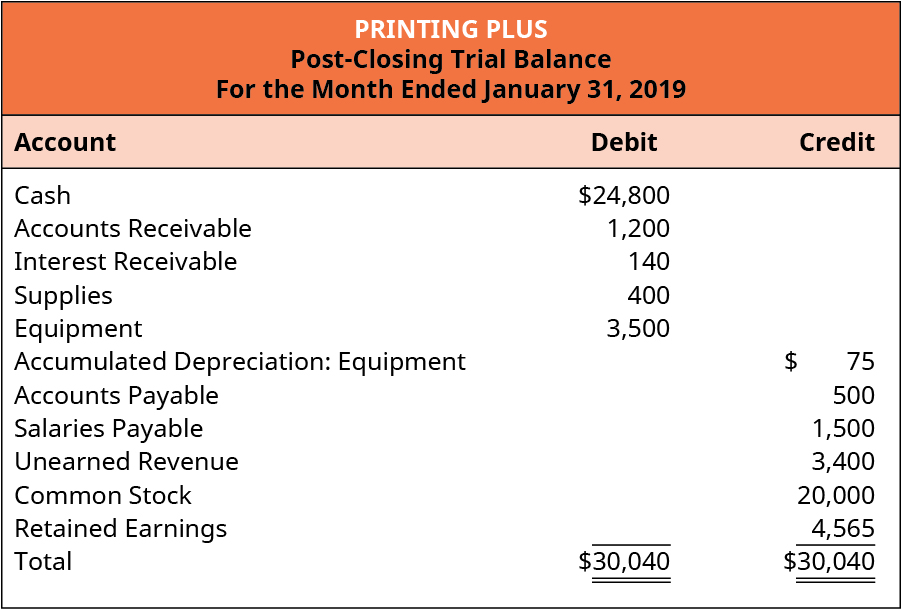
Notice that only permanent accounts are included. All temporary accounts with zero balances were left out of this statement. Unlike previous trial balances, the retained earnings figure is included, which was obtained through the closing process.
At this point, the accounting cycle is complete, and the company can begin a new cycle in the next period. In essence, the company’s business is always in operation, while the accounting cycle utilizes the cutoff of month-end to provide financial information to assist and review the operations.
It is worth mentioning that there is one step in the process that a company may or may not include, step 10, reversing entries. Reversing entries reverse an adjusting entry made in a prior period at the start of a new period. We do not cover reversing entries in this chapter, but you might approach the subject in future accounting courses.
Now that we have completed the accounting cycle, let’s take a look at another way the adjusted trial balance assists users of information with financial decision-making.
If you like quizzes, crossword puzzles, fill-in-the-blank, matching exercise, and word scrambles to help you learn the material in this course, go to My Accounting Course for more. This website covers a variety of accounting topics including financial accounting basics, accounting principles, the accounting cycle, and financial statements, all topics introduced in the early part of this course.
Many students who enroll in an introductory accounting course do not plan to become accountants. They will work in a variety of jobs in the business field, including managers, sales, and finance. In a real company, most of the mundane work is done by computers. Accounting software can perform such tasks as posting the journal entries recorded, preparing trial balances, and preparing financial statements. Students often ask why they need to do all of these steps by hand in their introductory class, particularly if they are never going to be an accountant. It is very important to understand that no matter what your position, if you work in business you need to be able to read financial statements, interpret them, and know how to use that information to better your business. If you have never followed the full process from beginning to end, you will never understand how one of your decisions can impact the final numbers that appear on your financial statements. You will not understand how your decisions can affect the outcome of your company.
As mentioned previously, once you understand the effect your decisions will have on the bottom line on your income statement and the balances in your balance sheet, you can use accounting software to do all of the mundane, repetitive steps and use your time to evaluate the company based on what the financial statements show. Your stockholders, creditors, and other outside professionals will use your financial statements to evaluate your performance. If you evaluate your numbers as often as monthly, you will be able to identify your strengths and weaknesses before any outsiders see them and make any necessary changes to your plan in the following month.
Key Concepts and Summary
- Post-closing trial balance: The post-closing trial balance is prepared after closing entries have been posted to the ledger. This trial balance only includes permanent accounts.
Multiple Choice
(Figure)Which of these accounts is included in the post-closing trial balance?
- Sales Revenue
- Salaries Expense
- Retained Earnings
- Dividends
C
(Figure)Which of these accounts is not included in the post-closing trial balance?
- Land
- Notes Payable
- Retained Earnings
- Dividends
(Figure)On which of the following would the year-end Retained Earnings balance be stated correctly?
- Unadjusted Trial Balance
- Adjusted Trial Balance
- Post-Closing Trial Balance
- The Worksheet
C
(Figure)Which of these accounts is included in the post-closing trial balance?
- Supplies Expense
- Accounts Payable
- Sales Revenue
- Insurance Expense
Questions
(Figure)What account types are included in a post-closing trial balance?
The post-closing trial balance will include only the permanent/real accounts, which are assets, liabilities, and equity. All of the other accounts (temporary/nominal accounts: revenue, expense, dividend) would have been cleared to zero by the closing entries.
(Figure)Which of the basic financial statements can be directly tied to the post-closing trial balance? Why is this so?
Exercise Set A
(Figure)Identify whether each of the following accounts would be listed in the company’s Post-Closing Trial Balance.
- Accounts Payable
- Advertising Expense
- Dividends
- Fees Earned Revenue
- Prepaid Advertising
- Supplies
- Supplies Expense
- Unearned Fee Revenue
(Figure)Identify which of the following accounts would not be listed on the company’s Post-Closing Trial Balance.
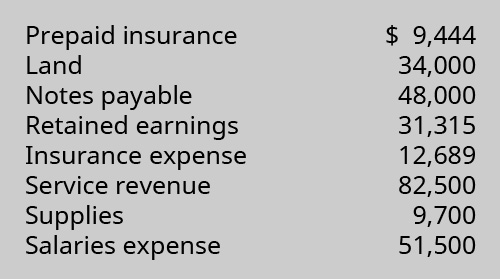
Exercise Set B
(Figure)Identify which of the following accounts would be listed on the company’s Post-Closing Trial Balance.
- Accounts Receivable
- Accumulated Depreciation
- Cash
- Office Expense
- Note Payable
- Rent Revenue
- Retained Earnings
- Unearned Rent Revenue
(Figure)Identify which of the following accounts would not be listed on the company’s Post-Closing Trial Balance.
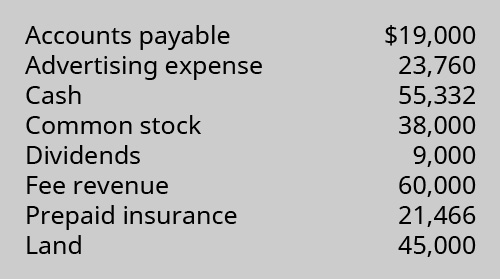
Problem Set A
(Figure)Assuming the following Adjusted Trial Balance, create the Post-Closing Trial Balance that would result, after all closing journal entries were made and posted:
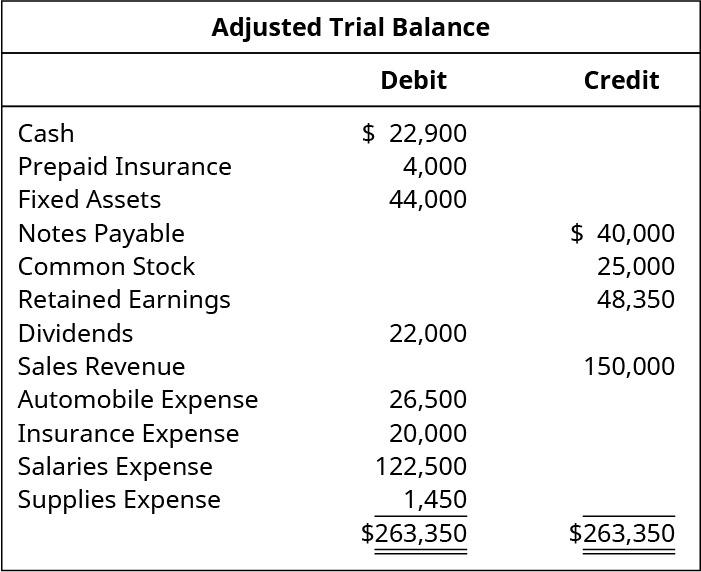
(Figure)The following Post-Closing Trial Balance contains errors. Prepare a corrected Post-Closing Trial Balance:
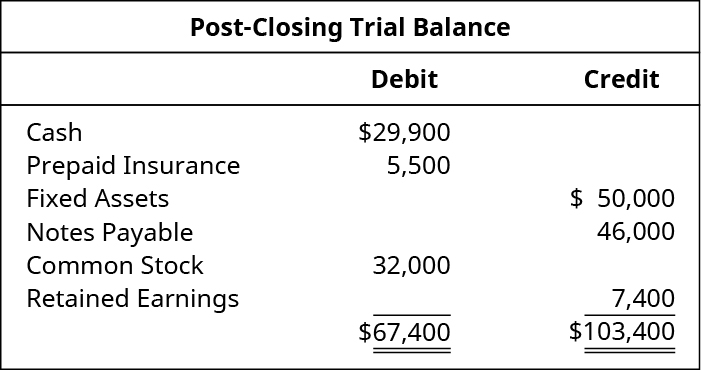
(Figure)Assuming the following Adjusted Trial Balance, recreate the Post-Closing Trial Balance that would result after all closing journal entries were made and posted:
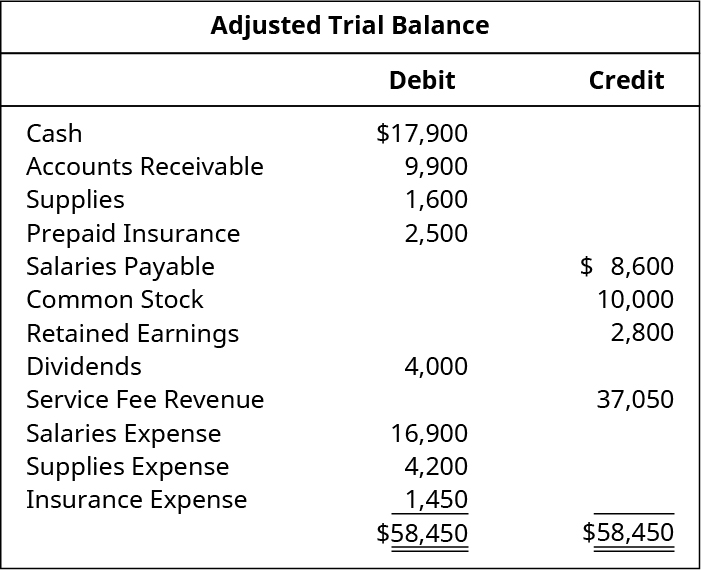
Problem Set B
(Figure)Assuming the following Adjusted Trial Balance, create the Post-Closing Trial Balance that would result after all closing journal entries were made and posted:
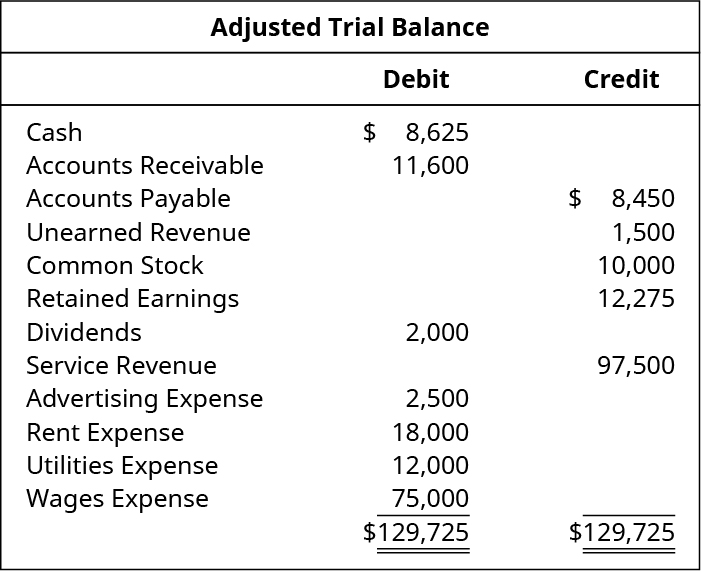
(Figure)The following Post-Closing Trial Balance contains errors. Prepare a corrected Post-Closing Trial Balance:
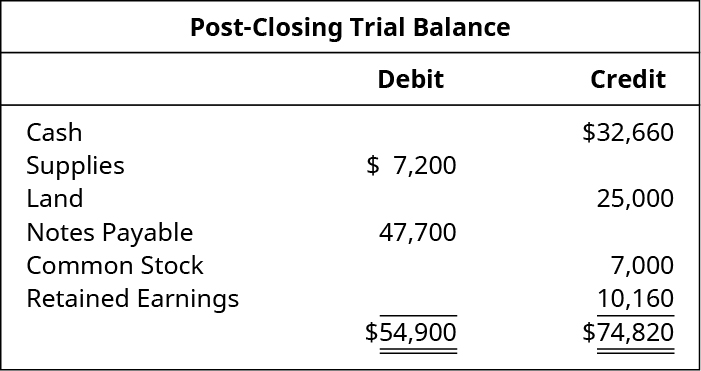
(Figure)Assuming the following Adjusted Trial Balance, re-create the Post-Closing Trial Balance that would result after all closing journal entries were made and posted:
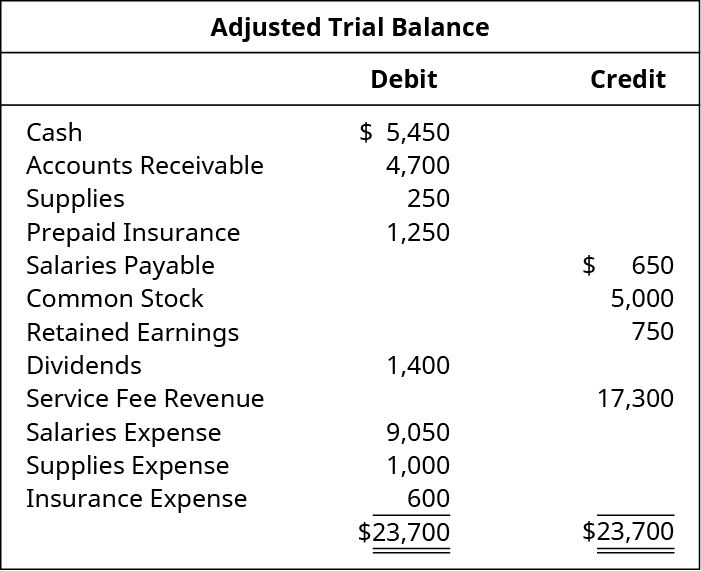
Thought Provokers
(Figure)Search the US Securities and Exchange Commission website (https://www.sec.gov/edgar/searchedgar/companysearch.html) and locate the latest Form 10-K for a company you would like to analyze. Submit a short memo:
- State the name and ticker symbol of the company you have chosen.
- Review the company’s Balance Sheets.
- Reconstruct a Post-Closing Trial Balance for the company from the information presented in the financial statements.
Provide the web link to the company’s Form 10-K, to allow accurate verification of your answers.

